Is 2022 the Year for OLED in the Desktop Display Market? A Run Down of All the Options
Originally published 24 February 2022, last updated 15 August 2022

Are you one of those people who’s used an OLED TV and have been holding out for OLED to make a real impression in the desktop monitor market? If so, 2022 could be your year, as there’s a whole range of exciting options set to arrive on the market that will finally bring OLED in to the mainstream. In this article we will run down the various options that are currently available and popular, the new options already announced, and consider which might be right for your requirements. We won’t go back over the pros and cons of OLED technology, if you want to know more about that then you can read our detailed article here. All we will say is that the potential for infinite contrast ratios, per-pixel local dimming, excellent HDR performance and super fast true <1ms response times is an attractive proposition.
The current popular OLED display options available today
We are talking in this article about displays that are at least somewhat viable for desktop monitor use. We think it’s safe to say that anything that is as large as 55″ or above is not going to be realistic for most people on a desk. Great for a TV, but not so much for monitor use. Ignoring the professional grade high-end OLED monitors for a moment, that we will discuss shortly, there is really only one mainstream and affordable OLED option for desktop display usage and that would be the current 48″ sized screens that began to appear in the market in 2020. This is especially true if you want high refresh rates, VRR support and a focus on gaming and multimedia.
48″ is still very large for a desktop monitor, and we would put these more in the bracket of “cross-over” displays. They are going to be great if you’re PC or console gaming and can sit a reasonable distance away, or if you want a display that you can also use for movies and multimedia viewing, again from a sensible viewing distance. The size is still going to be too large for many people though to fit on a desk, and for close up PC / general / office use. Our view is that it’s not really a well-suited size for these kind of normal uses, it’s still too large. Still, there’s a good number of people who’ve opted for these 48″ sized screens anyway to get the benefits of OLED, and if it suits their usage type.
LG C1 and CX 48″ OLED TV’s

The most popular options in the 48″ OLED display space are LG’s CX (from 2020) and C1 (from 2021) models. You can read our review of the LG CX as a desktop monitor for more information on how these perform. These are affordable considering the technology and features, especially when compared with high end monitors nowadays. The current 48″ C1 for instance retails for around £1,000 GBP in the UK right now.
These models have 4K resolution, 120Hz refresh rate, adaptive-sync for both AMD FreeSync and NVIDIA G-sync support and HDMI 2.1 connectivity with proper functionality like HDMI-VRR and ALLM for consoles. Since they are from LG’s TV range they also include Smart TV features like built in apps, Dolby Vision support (as well as HDR10 and HLG) and other TV-like features. They even support hardware level calibration which is great for TV and desktop monitor use if you have a suitable calibration device and software package.
However, because they are from the TV range they lack some monitor-type features like DisplayPort connectivity (so you need a very modern HDMI 2.1 enabled graphics card to use this properly), have a limited stand, and have a glossy screen coating which some people don’t want on a desktop display. They also have certain features that are designed to protect the OLED lifespan and prevent burn-in problems, which are perfectly fine and normal for a TV and shouldn’t cause any problems in those kind of uses, but that can be a bit restrictive when it comes to desktop monitor use (like the ABL for instance discussed in our review).
You can read more about the pros and cons of using an OLED TV like this in our review of the CX model, which should also be largely the same for the current C1 version. The CX and C1 48″ models remain a popular option in this cross-over display space for those wanting OLED.
- Available now, check current pricing on Amazon for your region (affiliate link)
LG’s new C2 48″ OLED TV coming soon!

If you’re happy with a 48″ model and interested in LG’s popular and established line-up, you may however want to wait for this year’s C2 range that should be appearing in the Spring. A new 48″ C2 model will be available in that range, or perhaps you can bag a bargain on the older models once these appear. You can read more about the updates for the C2 range in our news piece here, including the new OLED Evo” panels. If you’re waiting for the new C2 range and are worried about 48″ being too large, you may also want to consider the new 42″ sized model coming this year. More on that below.
- The new LG C2 48″ model should be available in the Spring 2022, with some early press demos already taking place this week for first views.
Gigabyte offer an alternative 48″ OLED display
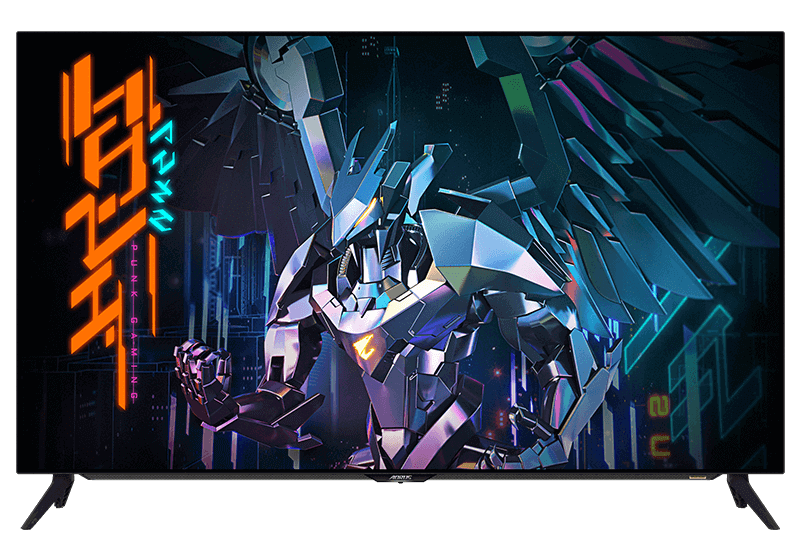
Another viable option if you don’t want LG’s CX / C1 displays might be the Gigabyte Aorus FO48U, a model designed with a focus more on desktop display use. The FO48U is part of Gigabyte’s popular and growing Aorus line-up. It’s based on the same panel as the LG 48″ OLED TV’s with a 4K resolution, 120Hz refresh rate, VRR support etc. Being aimed at desktop monitor usage this model includes DisplayPort 1.4 connectivity, as well as HDMI 2.1. It has more monitor-like settings and specs, and should have a less aggressive behaviour for things like ABL, which make it a bit more usable for normal uses (although it’s still a very large screen). Because it’s aimed at the monitor space, it does however lack some of the TV-like features, having only HDR10 and HGL content support but no Dolby Vision, and missing Smart TV functions and things like that. There’s more information about the FO48U in our news piece here.
- Available now, check current pricing on Amazon for your region (affiliate link)
Smaller TV options in 42″ size bridge the gap further
There’s no denying that the 48″ models discussed above are great screens with some great performance. The problem is that they’re probably too big still even at 48″ for most people. Fortunately LG Display, the primary provider of OLED panels in the TV space have an answer in the form of a new 42″ sized OLED panel. This was announced back in January 2021 and thankfully we’ve now seen a few displays that plan to use this new panel:
LG’s own C2 42″ OLED TV coming soon
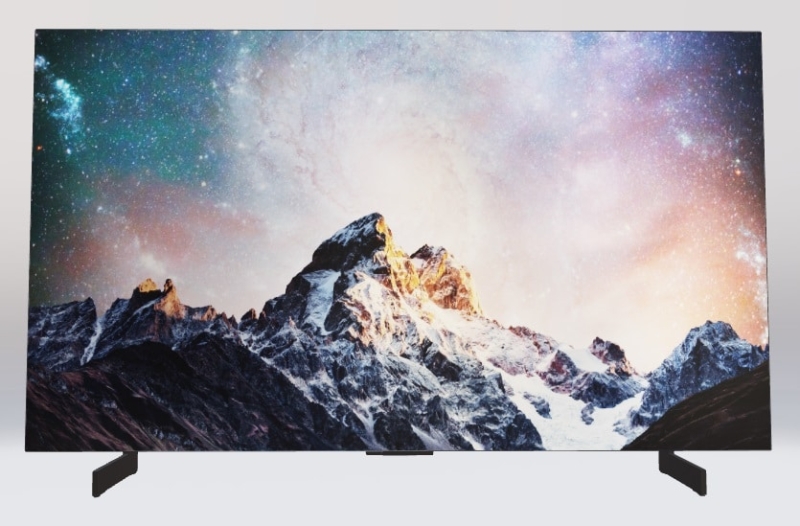
Part of LG’s own C2 OLED line-up for 2022 is a new 42″ sized model, providing a smaller option than the 48″ models of the CX and C1 range and helping bridge that gap further between desktop monitor and TV. It has a 4K resolution and 120Hz still, and maintains the TV-type features from the 48″ models, all in a more compact screen size. We discussed the benefits and limitations of this new screen size and the new C2 model in our news piece here. No doubt this will be a more accessible option for many, although 42″ is still very large for a desktop monitor. Many people are instead looking for more traditional monitor sizes like 27 – 32″ for instance. 42″ helps bridge the gap, but it still won’t be for everyone. This is why LG continue to market this screen as a TV primarily, with TV-like features and capabilities.
- The new LG C2 42″ model should be available in the Spring 2022, with some early press demos already taking place this week for first views.
Update 20 April 2022 – check our our full review of the LG 42C2 OLED here
Sony to release a 42″ model in their A90K OLED TV Range

Sony also plan to release a 42″ sized OLED based on the same panel, in their A90K TV range. The XR-42A90K will again offer 4K resolution, 120Hz refresh rate and a wide range of TV-type features. It will feature alternative technologies from Sony like their ‘XR OLED Contrast Pro’ for instance, while including common things like HDMI 2.1, VRR and ALLM. It’s another possible alternative from another leading OLED TV brand. They also have a 48″ model planned in that same new range.
- The new Sony XR-42A90K is listed as coming soon, likely to be around the same kind of time as LG’s offering
Asus ROG Swift PG42UQ designed to be a 42″ OLED desktop display
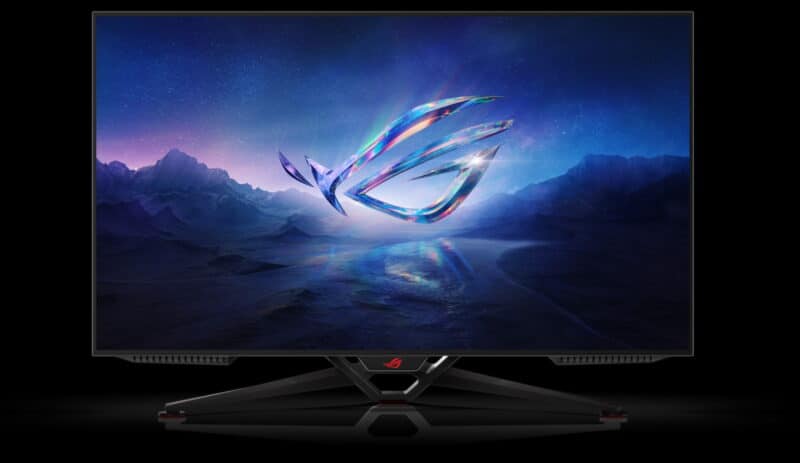
With LG making use of this new 42″ panel for their new C2 range, we’ve also seen Asus announce their own display in their popular ROG Swift gaming line-up. It’s 42″ again, and using the same LG Display panel, but it is more aimed at desktop monitor usage, dropping some of the TV capabilities of the LG C2, and adding others than are more common in the monitor space. For instance it will have DisplayPort connectivity as well as HDMI 2.1, and even an anti-glare screen coating instead of glossy that is featured in the TV space. Because it’s supposed to be a desktop monitor, it therefore lacks TV-type features like Smart TV functions, Dolby Vision HDR etc. You can read more about the PG42UQ in our news piece here.
- Update 15 August 2022 – check our our news piece with full information on this screen and our hands on first impressions from the Asus launch event
New large-sized 48″ OLED options announced for this year with monitor-like features

Since the 48″ OLED panel has been around for a while there are other displays announced that will make use of this, and provide further options from different manufacturers. Asus have a 48″ model in their ROG Swift range, the new PG48UQ. This is again positioned as a desktop monitor, featuring monitor-like features like DisplayPort and an anti-glare coating, but dropping TV-type elements. It’s basically the larger version of the PG42UQ (42″) we discussed above.
Acer have also announced their own Predator CG48, which even features a slightly higher (and quite random) 138Hz refresh rate for PC usage and again featuring monitor-type specs. In China, AOC have announced their own AGON AG485UD as well, with monitor-like specs and even including an adjustable stand.

Finally LG are working on a 48″ OLED screen in their UltraGear “monitor” line-up, which is expected to have DisplayPort (as well as HDMI 2.1) and an anti-glare coating. This model will be the LG 48GQ900.
- The Asus ROG Swift PG48UQ isn’t expected until Q3 2022, pricing currently unknown
- The Acer Predator CG48 is expected in Q3 2022 at an expensive starting price relative to LG’s TV’s of $2,499 USD / €2,199 Euro
- The AOC AGON AG485UD is announced for China, but availability and pricing in regions like Europe and the US is not yet know
- The LG UltraGear 48GQ900 is expected in second half of 2022, maybe even as early as July according to some sources
What about if you want a true desktop-sized monitor?
True OLED desktop monitors currently available, but in the professional space

What about if you want a true desktop-monitor sized screen, something that’s more like the common 27″ to 32″ sized displays you can get, but featuring OLED panel technology? What if even the new 42″ OLED panels are going to be too big for you?
Right now there are some OLED panels produced by JOLED that are 27″ and 32″ in size, but these are really reserved for use at the moment in very high cost, professional grade screens as the panels themselves are very expensive. These are true RGB panels as opposed to the WRGB (White+RGB) panels produced by LG Display for their TV’s.
We tested the first monitor to market using one of their new panels, LG’s 32″ UltraFine 32EP950 which was very impressive in terms of performance and specs, but comes at a very high price point. LG have other professional grade monitors in their range like the 32BP95E and 27BP95E for instance, but all these models are high priced and aimed at content creation, professional studios etc. Asus also announced in Sept 2021 their equivalent model in their ProArt series with the PA32DC, again aimed at professional users. You wouldn’t call any of these options “mainstream”.
These are all 60Hz refresh rate only and lack common gaming and multi-media specs like 120Hz+, VRR, and blur reduction modes for instance. As a result, they’re pretty niche right now and not viable for your average consumer. Certainly not really well suited to gaming and multimedia anyway if that’s your intended use, especially when you consider the much cheaper price of a OLED TV’s like those discussed above.
High refresh rate desktop OLED monitors expected soon
What if you want a true monitor-sized display with OLED but you want it to be (a) more affordable than the professional models discussed above, and (b) offer gaming specs like a high refresh rate? Thankfully 2022 has you covered here too, with a couple of very interesting models already announced.
These were showcased first of all at CES 2021 in January, with models announced from both Dell and Samsung. They are both making use of a new OLED technology from Samsung called Quantum Dot OLED (QD-OLED) panels. This is Samsung’s alternative to OLED with a different pixel structure and, according to their marketing at least, some benefits in terms of picture quality, colours and contrast. We discussed that more in the following news piece. Initially Samsung’s QD-OLED panel tech will be available in a curved 34″ ultrawide format in the monitor space, as well as in much larger TV’s (no 42″ or 48″ options though).
Dell Alienware AW3423DW actually coming very soon and with a surprisingly good price
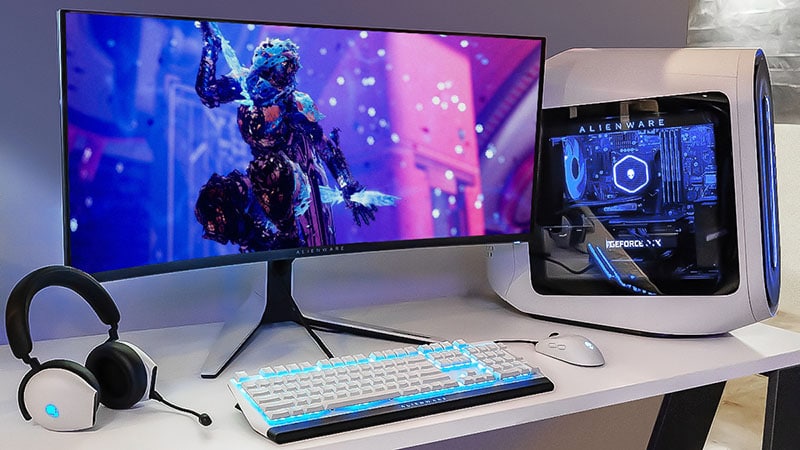
The first model announced with proper information at CES in January 2022 was Dell’s Alienware AW3423DW. The screen is 34″ in size with a 21:9 aspect ratio ultrawide format, and so can be considered a proper desktop monitor. It has a curved format (fairly subtle at 1800R) and a 3440 x 1440 resolution. This makes it far more viable for desktop usage, office, general tasks etc. This is still at the larger end of the monitor market, but 34″ is popular and certainly more accessible than a 42″ or 48″ display. It could be a really decent size option for an OLED monitor.
Update 24/5/22 – Check out our full review of the Dell Alienware AW3423DW here!
Best of all this QD-OLED panel will offer a high refresh rate with 175Hz possible (120Hz from a console). It boasts all the other benefits of OLED technology, and the screen also includes other monitor-like specs including DisplayPort 1.4, an anti-glare coating, a fully adjustable stand and even NVIDIA’s Native G-sync module for optimal VRR performance. It is probably not going to be as good for console gaming and things like that than a 42″ or 48″ OLED TV, partly due to the size, but also partly because it’s resolution cannot support a full 4K. If you’re more of a console gamer and a light PC user, maybe those larger screens would be more suited to you? For most people after a desktop monitor, this is likely to be a far more suitable option.
- Perhaps most surprising was that there isn’t going to be a massive long wait for this screen to appear. It was announced in Jan 2022 and is expected to be available during March 2022! It also has a surprisingly good price point too, with many expecting it to cost several thousand dollars, we were pleasantly surprised to see a $1,299 USD / £1,099 GBP price tag announced. More info on this screen in our news piece here.
Samsung Odyssey G8QNB remains somewhat mysterious but will appear later as an alternative

Samsung also teased their own alternative to the Dell screen above, or rather it appeared in the CES award list with some limited information, but was never followed up with any official press release from Samsung. As a result, we only have fairly limited information about this screen so far. We do know that it will use the same 34″ ultrawide QD-OLED panel and offer a 3440 x 1440 resolution and 175Hz refresh rate. We speculated in our news piece that it was likely that Samsung would offer this as an adaptive-sync screen, instead of using the Native G-sync module like Dell have. Maybe this will make it a little cheaper, but we will have to wait and see.
- We will have to wait for more news and official information, but this will appear later than Dell’s screen for sure, hopefully later in 2022.
What about other monitor options?
It’s probably fair to say that we will see other sized QD-OLED options from Samsung at some point, although none have been announced at this time. We would love to see options like 27″ 1440p, 32″ 4K for instance. We had some news last year in May 2021 that AU Optronics were working on 32″ 4K inkjet printed OLED panels with 144Hz refresh rate, but we have not seen any further news on those, or monitors announced that might use this panel since. Stay tuned to our news feed for all the latest information when we get it.
We may earn a commission if you purchase from our affiliate links in this article- TFTCentral is a participant in the Amazon Services LLC Associates Programme, an affiliate advertising programme designed to provide a means for sites to earn advertising fees by advertising and linking to Amazon.com, Amazon.co.uk, Amazon.de, Amazon.ca and other Amazon stores worldwide. We also participate in a similar scheme for Overclockers.co.uk, Newegg, Bestbuy , B&H and some manufacturers.
Stay up to date
 |  |  |  |
| Browser Alerts | Follow on X | Subscribe on YouTube | Support Us |
All the latest news from CES
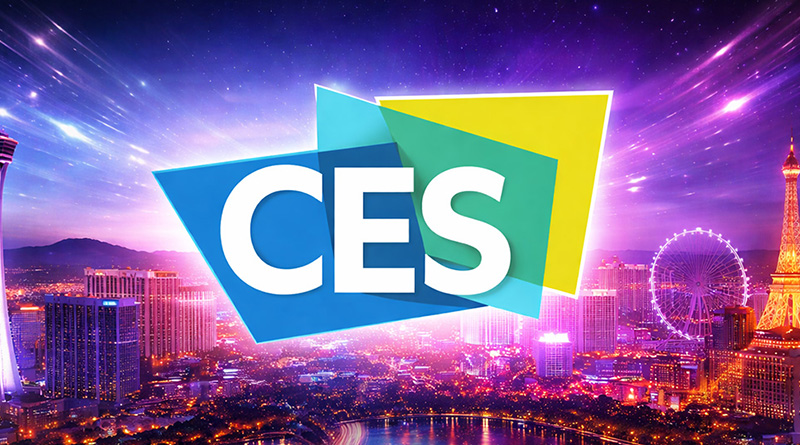
Popular Trending News
 LG Announce the 32GX870B, Their First 32″ 4K Tandem WOLED Monitor December 31, 2025 LG have released some details about another new monitor that will be launched in 2026 and showcased at CES next week. The 32GX870B is a 32″ sized screen with a 3840 x 2160 “4K” resolution and 240Hz native refresh rate,…
LG Announce the 32GX870B, Their First 32″ 4K Tandem WOLED Monitor December 31, 2025 LG have released some details about another new monitor that will be launched in 2026 and showcased at CES next week. The 32GX870B is a 32″ sized screen with a 3840 x 2160 “4K” resolution and 240Hz native refresh rate,… Asus Unveil the ROG Swift PG27UCWM with a 27″ 4K Tandem WOLED Panel and RGB-stripe Pixel Layout January 4, 2026 Asus teased the arrival of this screen recently on their social media channels and we can now unveil official information about this exciting new OLED monitor that will be on show at CES this week. The ROG Swift PG27UCWM is…
Asus Unveil the ROG Swift PG27UCWM with a 27″ 4K Tandem WOLED Panel and RGB-stripe Pixel Layout January 4, 2026 Asus teased the arrival of this screen recently on their social media channels and we can now unveil official information about this exciting new OLED monitor that will be on show at CES this week. The ROG Swift PG27UCWM is… MSI Announce Two New 32″ 4th Gen QD-OLED Monitors with DarkArmor Film January 1, 2026 Originally Published 31 December 2025, last updated 1 January 2026 MSI have today announced two new 32″ 4K 240Hz monitors in their QD-OLED line-up ahead of CES 2026 next week. Both the MPG 322UR QD-OLED X24 and MAG 321UP QD-OLED…
MSI Announce Two New 32″ 4th Gen QD-OLED Monitors with DarkArmor Film January 1, 2026 Originally Published 31 December 2025, last updated 1 January 2026 MSI have today announced two new 32″ 4K 240Hz monitors in their QD-OLED line-up ahead of CES 2026 next week. Both the MPG 322UR QD-OLED X24 and MAG 321UP QD-OLED… Asus ROG Swift PG34WCDN Unveiled with 34″ 360Hz 5th-Gen QD-OLED Panel January 4, 2026 Asus have announced today their new ROG Swift PG34WCDN OLED monitor, featuring Samsung Display’s brand-new 5th-Gen QD-OLED panel that we saw announced a few days ago. It’s a 34” ultrawide monitor with a subtle 1800R curvature and offering a 3440…
Asus ROG Swift PG34WCDN Unveiled with 34″ 360Hz 5th-Gen QD-OLED Panel January 4, 2026 Asus have announced today their new ROG Swift PG34WCDN OLED monitor, featuring Samsung Display’s brand-new 5th-Gen QD-OLED panel that we saw announced a few days ago. It’s a 34” ultrawide monitor with a subtle 1800R curvature and offering a 3440… The LG 39GX950B is the World First 39″ 5K2K OLED Monitor to be Announced December 26, 2025 Ahead of CES in a couple of week’s time, LG Electronics have unveiled their line-up of new monitors that will be on show at the event. They also announced the global launch of their new premium gaming monitor brand, UltraGear…
The LG 39GX950B is the World First 39″ 5K2K OLED Monitor to be Announced December 26, 2025 Ahead of CES in a couple of week’s time, LG Electronics have unveiled their line-up of new monitors that will be on show at the event. They also announced the global launch of their new premium gaming monitor brand, UltraGear…
